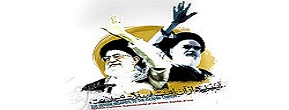Iran's Islamic Revolution at Glance
 While millions of Iranians take to the streets in Tehran and all other cities across the country on February 11 each year to commemorate the victory of their revolution back in 1979, it is still much difficult for many outside the country's borders, specially those outside the Muslim community, to decipher the underlying cause and people's need and motive for revolting against a king whose army was said to be the fifth strongest in the world.
While millions of Iranians take to the streets in Tehran and all other cities across the country on February 11 each year to commemorate the victory of their revolution back in 1979, it is still much difficult for many outside the country's borders, specially those outside the Muslim community, to decipher the underlying cause and people's need and motive for revolting against a king whose army was said to be the fifth strongest in the world.
The Iranian Revolution (Also known as the Islamic Revolution, Liberty Revolution or 1979 Freedom Revolution) refers to events involving the overthrow of Iran's monarchy (Pahlavi dynasty) under Shah Mohammad Reza Pahlavi and its replacement with an Islamic republic under Grand Ayatollah Ruhollah Khomeini, the leader of the revolution. It has been called an event that made Islamic principlism (or as westerners like to label Islamic fundamentalism) a political force ... from Morocco to Malaysia.
The first major demonstrations against the Shah began in January 1978. Between August and December 1978 strikes and demonstrations paralyzed the country. The Shah left Iran for exile in mid-January 1979, and two weeks later Imam Khomeini returned to Tehran to a greeting by several million Iranians. The royal regime collapsed shortly after on February 11 when guerrillas and revolutionary people overwhelmed troops loyal to the Shah in armed street fighting. Iran voted by national referendum to become an Islamic Republic on April 1, 1979, and to approve a new Islamic Constitution whereby Imam Khomeini officially became Supreme Leader of the country, in December 1979, although he had already been known as the Leader and Founder of the Islamic Republic.
The revolution was unusual for the surprise it created throughout the world: it lacked many of the customary causes of revolution (defeat at war, a financial crisis, peasant rebellion, or disgruntled military); produced profound change at great speed; was massively popular; overthrew a regime heavily protected by a lavishly financed army and security services; and replaced a modernizing monarchy with a republic based on Guardianship of the Islamic Jurists (or Velayat-e Faqih). Its outcome - an Islamic Republic "under the guidance of an 80-year-old exiled religious scholar from Qom" - was, as one scholar put it, "clearly an occurrence that had to be explained".
For Iranians, it was an era of heroism and sacrifice that brought forth nothing less than the nucleus of a world Islamic state - "a perfect model of splendid, humane, and divine life… for all the peoples of the world".
Source: Fars
Add new comment